Lancashire-born founder of the Women in Motorcycling Exhibition on tackling the two-wheeled patriarchy and the growing female biker community
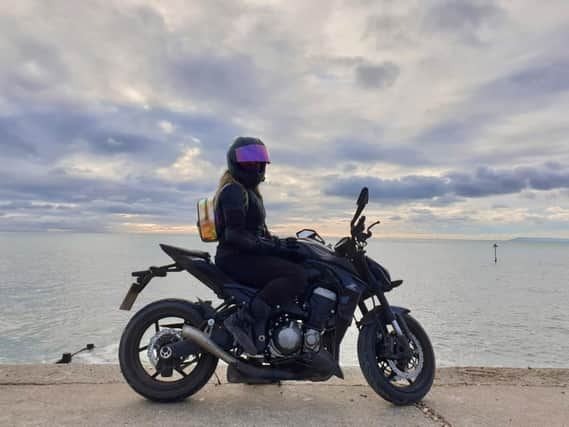

A keen biker for a decade or so, Lindsay is discussing protective equipment. "I had a pair of men's biking jeans for so many years because I couldn't get ladies' ones," she says. "The armour wasn't where it should be, it sat slightly underneath my knee. I was lucky I never had an accident, but if I had, I wouldn't have been protected."
Such a depressing reality - one in which manufacturers of products designed to keep motorcycle riders safe in extremely dangerous situations simply can't be bothered to create products for half the population - is as bleak as it is unacceptable. As various studies have shown, the world is designed for men, and it appears that the realm of motorcycling is no different.
Until now, that is.
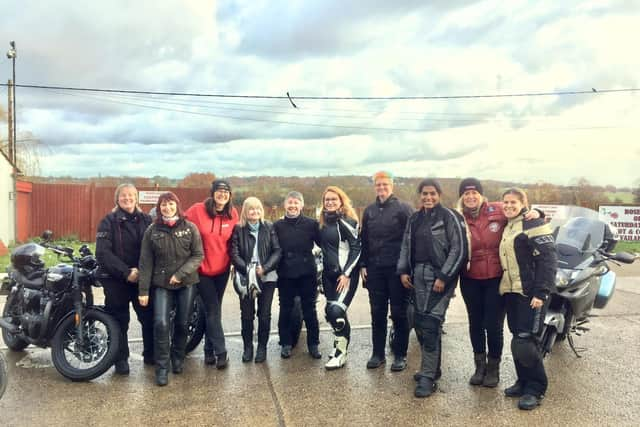

Advertisement
Hide AdAdvertisement
Hide AdBorn and raised in East Lancashire, Lindsay grew up around bikes owing to the fact that her father was an avid motorcyclist. But the seeds of her ever-growing passion for all things two-wheeled weren't planted by her dad. They were planted by the shoddiness of the UK's public transport system.
"I was living in London and getting fed up of the trains being cancelled and getting around being a pain," says Lindsay, now 35. "So, nine years ago, I took myself on CBT (Compulsory Basic Training), got myself a little Vespa, and pootled around on that for four years. From the start, I just loved being on two wheels and the freedom it gave me."
Now thoroughly enamoured, she soon progressed to bigger and quicker bikes, buying first a battered old Kawasaki ER-5 before replacing it with an ER-6. "As a bit of a risk-taker, I fell in love with the adrenaline rush," says Lindsay, who got her bike licence before her driving licence. "Then, a couple of years ago, I got my dream bike: a Kawasaki Z1000. I just love it."
Lindsay also got more involved with the famously gregarious biking community, attending various events and biker cafés and relishing the opportunity to meet others who shared her passion. "But people were always a bit surprised by a girl being on a bigger bike," she says. "And there weren't many other women, which made me think about the industry's attitude.
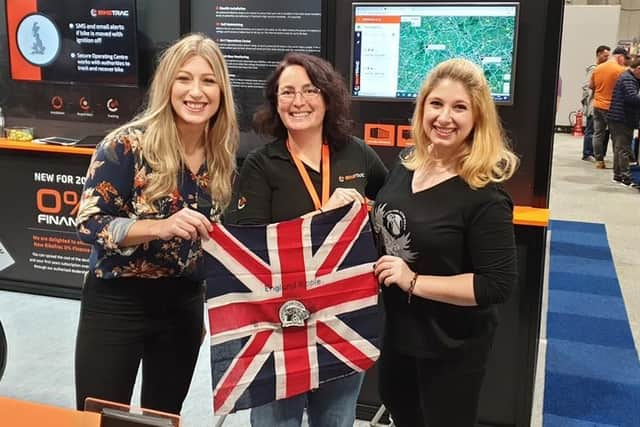

Advertisement
Hide AdAdvertisement
Hide Ad"I've always grown up doing stereotypically 'blokey' things like quad biking and snowboarding, so I was quite comfortable," she adds. "But a lot of women bikers have had a lot of negative comments like 'you shouldn't be riding that bike' or 'that's too much power for you' and a load of other really stupid and outdated attitudes which were heavily present in the biking world.
"An attitude problem was apparent," Lindsay says, "And, from the start, my reaction was 'this needs to change and I'm going to do something about it'."
Disillusioned by the casual sexism on show, Lindsay sought to not only elevate women bikers so as to make them more visible role models for others, but also to celebrate and champion them in order to demonstrate how freeing, empowering, and fundamentally feminine riding a motorbike could and should be. To do this, she founded the Women in Motorcycling Exhibition.
"I myself was confident in the biking community, but I knew a lot of other women wouldn't be and would therefore miss out on the amazing experience of being on two wheels," says Lindsay. "I didn't want women to decide against getting into biking just because they were nervous about the male-dominated world and the stereotypes, which are no fault of their own."
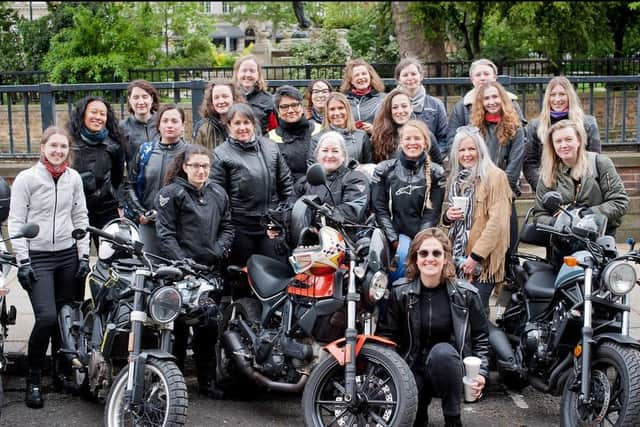

Advertisement
Hide AdAdvertisement
Hide AdWhile the idea for the Women in Motorcycling Exhibition first came to her in 2018, it wasn't until last month that Lindsay was finally able to host the inaugural version of the event owing to venue issues in 2019 and the outbreak of Covid-19 in the UK in 2020. But, despite the delay, it was a tremendous hit.
"The event was amazing, it went better than I could have ever imagined," says Lindsay. "It was a real celebration of women bikers and everyone who came has given me such good feedback. And, while it was a great way of bringing the female biking community together, a lot of guys came too, which is what I wanted. To have guys there supporting it was really nice.
"Seeing it all come together made me so proud because we're getting the industry to listen," she adds. "Changes still need to be made with stuff like women's gear because, until that kind of thing affects you, you don't know it's an issue. Guys might be like 'there are jackets available' but, if you have an accident, a men's jacket might slide up and not protect you.
"We're not there yet, but things like the event are stepping stones."
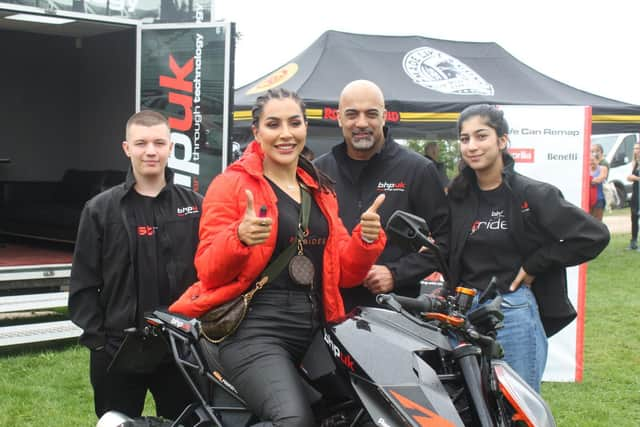

Advertisement
Hide AdAdvertisement
Hide AdWhile the days of a female motorcyclist existing only in the realms of sleazy softcore pin-ups are fading rapidly, women still only represent around 20% of the market, according to Lindsay. And, although that number is growing all the time, a frustratingly pervasive element of misogyny still remains.
Even whilst organising the Women in Motorcycling Exhibition - Lindsay is the founder and owner of events planning and management company Floor 3 Events, which she started five years ago - Lindsay experienced pushback from certain companies who refused to even give her the time of day due to her ambitions not fitting with their 'agenda'.
"I suspect they meant it didn’t fit with their gender, but hey-ho..." says Lindsay, who is now leading a growing movement out to ride roughshod over sexist stereotypes and antiquated attitudes towards female bikers. And that movement, spurred on by positive female role models, is bringing a new generation of younger female bikers into the community.
Given a new lease of life and renewed confidence to pursue something they're genuinely passionate about, the movement is also creating industry-changing ripples, too.
Advertisement
Hide AdAdvertisement
Hide Ad"Manufacturers are increasingly catering for a demographic they just hadn't catered for previously," explains Lindsay. "Triumph are doing lowered bikes, which gives people a lot more confidence whilst riding, and some big brands have released dedicated ladies' ranges as opposed to just a few things here and there as an afterthought.
"The sponsors of my show, RuRoc and Enginehawk, came to me and said 'we understand there's not enough of a range for women' and said they wanted to get more feedback about their female jackets," she adds. "That was incredible."
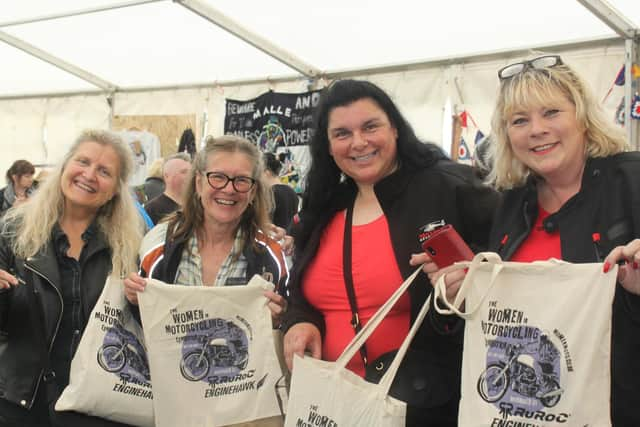

While the idea that women are finally able to buy appropriate safety equipment and purpose-designed helmets, gloves, jackets, and riding jeans - all of which, unfathomably, has proven almost impossible to access in decades gone by - shouldn't be a ground-breaking concept, it is for the bikers themselves. These changes are long overdue, but nevertheless welcome.
Looking to the future, Lindsay is currently hoping to pin-down some dates for the second edition of the Women in Motorcycling Exhibition soon. But the past year of the pandemic has seen her change tack slightly as a result of the various lockdowns putting paid to her work as an events manager and organiser.
Advertisement
Hide AdAdvertisement
Hide Ad"I had a moment where I was feeling sorry for myself when the pandemic was in full-swing and lockdown was happening," explains Lindsay. "I was thinking 'I've got no work' and being selfish because everyone was in the same boat, but then I was asked to help on a six-week project to feed homeless people in London and said yes.
"We linked up with homelessness charity St Mungo's, who housed all the homeless people in city, and we helped out by coordinating the food side of things," says Lindsay, who ended up working on the project for a year, calling the experience 'humbling and rewarding'. "It was such an incredible thing to get involved in."
But, having since returned to her day job and having started to organise women's bike rides across the country once more, Lindsay is hopeful and motivated.
"I just know there's a community of potential female bikers who just need that confidence to get on two wheels and, when they see people that they can associate themselves with, they can think 'that's for me'," she says. "My best mate, for example: she's always had a bit of an interest in bikes but would've never got involved had she not discovered the community.
Advertisement
Hide AdAdvertisement
Hide Ad"That's why my message to women who are interested is that there are always other people there to support you," adds Lindsay, who also pays tribute to early pioneers of the women's biker movement such as Elspeth Beard, one of the first English women to ride a motorcycle around the world, pro racers Maria Costello and Ana Carrasco, and influencers Vanessa Ruck, Rosie Gabrielle, Ruby Rides, and Sallyha Din.
"Because of that rise in visibility and of female role models, more people are getting into biking because they're finally being shown that biking isn't all Hell's Angels with tattoos and beards," Lindsay says. "The dream is to make it so that the concept of a female biker is just as normal and accepted as a male biker, because it should be.
"But, fundamentally, it's all about getting women out there enjoying riding. Hopefully that will engage the industry and show them that female riders are here, we're not going anywhere, and that they need to cater to us."